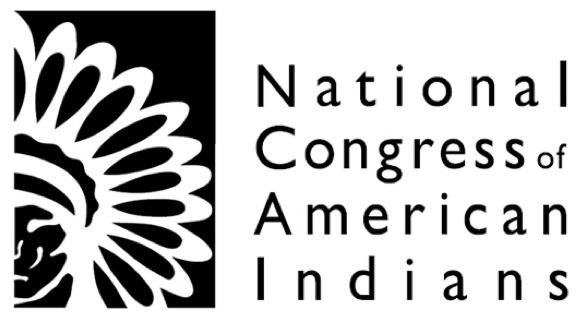Website ncai.org | Founded 17 November 1944 | |
 | ||
Formation November 17, 1944; 72 years ago (1944-11-17) Purpose American Indian and Alaska Native indigenous rights organization | ||
Proud to be national congress of american indians
The National Congress of American Indians (NCAI) is an American Indian and Alaska Native indigenous rights organization. It was founded in 1944 to represent the tribes and resist federal government pressure for termination of tribal rights and assimilation of their people. These were in contradiction of their treaty rights and status as sovereign entities. The organization continues to be an association of federally recognized and state-recognized American Indian tribes.
Contents
- Proud to be national congress of american indians
- History
- Constitution
- Organizational structure
- Executive Director
- Voting
- Achievements
- Internal policy differences
- Ongoing issues
- Notable members
- Past presidents
- References
History
Historically the Indian peoples of the North American continent rarely joined forces across tribal lines, which were divisions related to distinct language and cultural groups. One reason was that most tribes were highly decentralized, with their people seldom united around issues.
In the 20th century, a generation of American Indians came of age who were educated in multi-tribal boarding schools and they learned to form alliances across tribes. They increasingly felt the need to work together politically in order to exert their power in dealing with the United States federal government. In addition, with the efforts after 1934 to reorganize tribal governments, activists believed that Indians had to work together to strengthen their political position. Activists formed the National Congress of American Indians to find ways to organize the tribes to deal in a more unified way with the US government. They wanted to challenge the government on its failure to implement treaties, to work against the tribal termination policy, and to improve public opinion of and appreciation for Indian cultures.
The initial organization of the NCAI was done largely by Native American men who worked for the Bureau of Indian Affairs, and represented many tribes. At the second national convention, Indian women attended as representatives in numbers equal to the men. The convention decided that BIA employees should be excluded from serving as general officers or members of the executive committee. The first president of the NCAI was Napoleon B. Johnson, a judge in Oklahoma. Dan Madrano was the initial secretary-treasurer; he was a Caddo who was serving as an elected member of the Oklahoma State Legislature. From 1945 to 1955, the executive secretary of the NCAI was Ruth Muskrat Bronson, who established the organization's legislative news service.
During the late 20th century, NCAI contributed to gaining changes in legislation to protect and preserve Indian culture, as well as the assertion by many tribes of sovereignty in dealing with the federal government.
In the early 21st century, key goals of the NCAI are:
Constitution
The NCAI Constitution says that its members seek to provide themselves and their descendants with the traditional laws, rights, and benefits. It lists the by-laws and rules of order regarding membership, powers, and dues. There are four classes of membership: tribal, Indian individual, individual associate, and organization associate. Voting right is reserved for tribal and individual members. According to section B of Article III regarding membership, any tribe, band or group of American Indians and Alaska Natives shall be eligible for tribal membership provided it fulfills the following requirements
Organizational structure
The organizational structure of the National Congress of American Indians includes a General Assembly, and Executive Council and seven committees. The up-and-coming executive Board of the NCAI is as follows:
In addition to these four positions, the NCAI executive board also consists of twelve area Vice-Presidents and twelve Alternative Area Vice-President.
Executive Director
The executive director of National Congress of American Indians is Jackie (Jacqueline) Pata. She has served as executive director since 2001, and works closely with her family at NCAI. Husband Chris Pata is Systems Administrator and daughter Jamie Gomez is External Affairs Director.
Voting
Every tribe gets a number of votes allocated them specific to the size of each tribe.
Achievements
Members were hot discussion topics and often made headlines in valued newspapers such as The New York Times. The successes of the NCAI over these years have been a policy of non-protesting. As a matter of fact, the NCAI were known in the 1960s to carry a banner with the slogan, “INDIANS DON’T DEMONSTRATE”
Internal policy differences
In the early 1960s, a shift in attitude occurred. Many young American Indians branded the older generation as sell-outs and called for harsh militancy. Two important militant groups were born: the American Indian Movement (AIM) and the National Indian Youth Council (NIYC). The two groups protested several conventions.
Ongoing issues
Currently, the NCAI is fighting for improved living conditions on reservations, arguing that 560 tribes are federally recognized but fewer than 20 tribes generate enough wealth from casinos to turn the tribe’s economy around. According to the NCAI website, other current issues and topics include:
In 2001, the advertising firm of DeVito/Verdi created an advertising campaign and poster for the NCAI to highlight offensive and racist sports team images and mascots. In October of 2013, the NCAI published a report on sports sports teams using harmful and racial "Indian" mascots.
